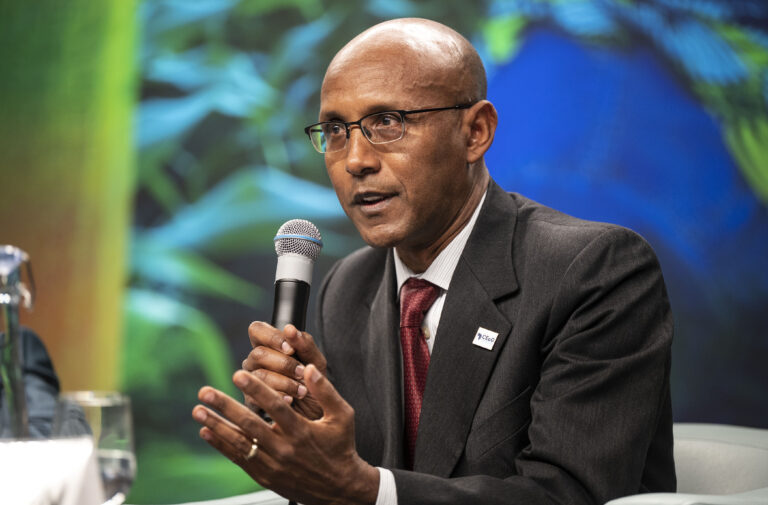
Water crisis in Turkana County. Photo/Courtesy
By Daisy Okiring
TURKANA, Kenya – Turkana County has launched a groundbreaking digital Water, Sanitation, and Hygiene (WASH) Map, a state-of-the-art dashboard designed to tackle water scarcity through advanced data integration and real-time monitoring. This strategic initiative represents a significant leap in sustainable resource management for the arid region.
The innovative platform is the result of a collaborative effort between the Turkana County Government, the Lokichar-based development organization LOKADO, and Welthungerhilfe Kenya, which provided funding and technical support for the project. The system aims to transform how water resources are managed by providing unprecedented visibility into water infrastructure across the county.
Addressing Critical Water Challenges
Turkana County has historically faced severe water challenges, characterized by recurrent droughts, variable rainfall patterns, and limited water infrastructure. According to the county water department, the new digital tool was specifically designed to simplify complex hydrological data into accessible visual formats, enabling more effective planning and resource allocation.
The dashboard integrates multiple data streams, including groundwater levels, borehole performance, water quality metrics, and infrastructure status. By centralizing this information, county officials can now monitor key performance indicators, identify service gaps, and prioritize interventions with greater precision than ever before.
Paul Lotum, Director of Water Services, emphasized the transformative potential of the new system during the launch meeting. “When water resources are managed well, no one should suffer from thirst or hunger, and no livestock should die,” he stated. “This dashboard represents a fundamental shift in our approach to water management – from reactive crisis response to proactive, data-driven planning.”

Advanced Features and Capabilities
The WASH Map incorporates several advanced technological features that set it apart from previous management attempts. The system utilizes geographic information system (GIS) technology to provide spatial representation of water resources, enabling officials to visualize distribution patterns and identify underserved areas.
One of the most significant capabilities is the dashboard’s groundwater mapping function. Felix Tomno, Turkana East Sub-county Water Officer, explained how this feature addresses critical needs: “Mapping areas with low water potential or high mineral content early in the planning process can save substantial resources. Identifying regions with high fluoride or salinity levels will enable us to develop specific treatment interventions to ensure safe water access.”
Read More: MCK, IEBC sign pact to strengthen media role in 2027 polls
The system also includes historical data analysis tools that allow planners to identify long-term trends and patterns. Anderson Koskey, Senior Drilling Superintendent, noted that “integrating historical borehole data will facilitate efficient mapping of water points and support both current needs and future planning. The dashboard will enhance our geophysical investigations by identifying potential aquifer zones based on analyzed data.”
Regulatory and Compliance Applications
Beyond operational planning, the WASH Map serves important regulatory functions. Josephine Oyaro, Licensing Officer from the Water Resources Authority (WRA), highlighted how the tool will improve compliance monitoring: “The dashboard provides precise GPS coordinates that enable the WRA to verify licensed borehole locations and identify unregulated drilling activity. This capability is crucial for enforcing water resource management regulations and preventing illegal extraction.”
The compliance features address long-standing challenges in water resource management, particularly the proliferation of unregulated boreholes that have threatened aquifer sustainability in some regions. By providing transparent, accessible data, the system creates accountability mechanisms that were previously difficult to implement.

Implementation and Future Development
The launch meeting brought together sub-county water officers, service providers, and technical experts who conducted a comprehensive review of the dashboard’s initial capabilities. Participants engaged in detailed discussions to identify data gaps and functional limitations, providing valuable feedback for system refinement.
Dennis Ekiru, LOKADO WASH Liaison and session facilitator, stressed the importance of data quality in the system’s success: “The effectiveness of this dashboard depends entirely on the accuracy and completeness of the data we feed into it. We must maintain rigorous standards in data collection and reporting to ensure the tool delivers on its potential.”
Read More: Mudavadi seeks global patners to sustain peace missions in Somalia, Haiti
The implementation process will involve phased rollout across sub-counties, beginning with training programs for water officers and technical staff. The development team plans to incorporate additional features based on user feedback, including mobile data collection applications and public-facing information portals.
Long-Term Impact and Sustainability
When fully operational, the Turkana WASH Map is expected to serve as a cornerstone of sustainable water governance for years to come. The system’s ability to inform long-term planning, optimize resource allocation, and monitor environmental impacts positions it as a model for other arid regions facing similar water security challenges.
The dashboard’s development aligns with broader national and international goals for sustainable development and climate resilience. By providing reliable data for evidence-based decision making, the tool supports progress toward multiple Sustainable Development Goals, particularly SDG 6: Clean Water and Sanitation.
As climate patterns become increasingly variable, the need for sophisticated water management tools grows more urgent. The Turkana WASH Map represents a significant step toward building resilience against water scarcity through innovation, collaboration, and data-driven governance.



